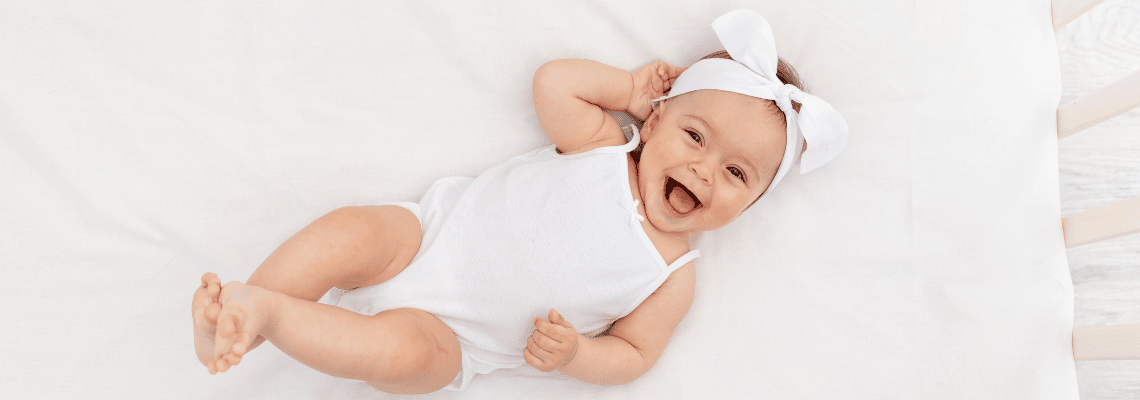
A new baby is one of the most amazing things in the world. Though they are so small and fragile, they are already equipped with everything they need to survive. One of the most amazing things about newborns is their reflexes and watching them develop.
These simple, automatic movements help them protect themselves and learn about their surroundings. For example, often times when a newborn is touched on the cheek, they will turn their head towards the stimulus to find food. Other reflexes include the grasp reflex, which helps them to hold on to objects, and the startle reflex, which protects them from sudden noises.
Newborn reflexes are temporary and will disappear as the baby grows and develops, however, they provide an important foundation for later learning and development and can help doctors determine if a baby’s brain and nervous system are functioning properly.
Common Newborn Reflexes
One of the most well-known newborn reflexes is known as the Moro reflex. For this, the baby throws their arms out and grasps anything within reach as if they are falling. The Moro reflex typically appears when the baby is startled or feels like they are falling, but loud noises or sudden movements can also trigger it. This reflex usually disappears by four months old.
Another common reflex is the Babinski reflex. This is when the baby bends its big toe upward and fans out its other toes when the bottom of its foot is stroked from heel to toe. This reflex is often incorporated into standard neurological examinations as it can be indicative of dysfunction of the corticospinal tract (CST), the descending fiber tract that begins at the cerebral cortex and runs through the brainstem and spinal cord. The Babinski reflex typically goes away by 12 months old.
The rooting reflex is another important reflex to know about and is the reflex previously mentioned. This is when the baby turns its head toward anything that brushes against its cheek or the corner of their mouth. This helps them when finding a nipple so they can start breastfeeding or bottle feeding. The rooting reflex typically disappears around four to six months old, lasting until the frontal lobe of the cerebral cortex develops and suppresses this primitive motor reflex.
Finally, the Palmar grasp reflex is when the baby clenches their first around anything that touches their palm. This helps them hold onto objects and develop their fine motor skills. The grasp reflex usually fades around six months old and a similar reflex in the toes lasts until nine to 12 months. Typically, a weak reflex before six months or persistence of the reflex after six months may imply an underlying abnormality or peripheral nerve concern.
When Do Newborn Reflexes Go Away
 Most newborn reflexes are gone by the time a baby is four to six months old. This includes the startle reflex, which typically disappears around three to four months; the grasp reflex, which goes away at around four to six months; and the Babinski reflex, which disappears at around 12 months. Some other reflexes may linger into early childhood and can be monitored by you or a pediatrician for any developmental concerns.
Most newborn reflexes are gone by the time a baby is four to six months old. This includes the startle reflex, which typically disappears around three to four months; the grasp reflex, which goes away at around four to six months; and the Babinski reflex, which disappears at around 12 months. Some other reflexes may linger into early childhood and can be monitored by you or a pediatrician for any developmental concerns.
As babies develop more voluntary control over their bodies, they no longer need these primitive reflexes. However, some researchers believe that some of these reflexes may lay the groundwork for later development. For example, the Babinski reflex is thought to be involved in a baby’s ability to learn to walk. So even though newborn reflexes go away, they may still play an important role in a child’s development.
How Do You Know If Your Baby Has a Reflex Issue?
There are a few telltale signs that may indicate your baby has a reflex issue. For example, if your baby startles easily or is slow to adjust to new surroundings, this could indicate an immature or underdeveloped reflex. Additionally, if your baby seems unusually floppy or has difficulty sucking and swallowing, these could also be signs of a reflex issue.
If you notice any of these signs, it’s important to speak with your child’s pediatrician so they can provide further guidance and support. Early intervention can resolve most reflex issues quickly without lasting effects.
Helping Baby Overcome Reflex Issues
If your baby has any reflex issues, there are some things you can do to help. One of the most important things is to encourage your baby to move. This can help to stimulate their nervous system and get them used to new movement patterns. You can also try massage and other gentle touch therapies to help relax the muscles and ease any pain or discomfort.
Newborns have many amazing reflexes that help them survive and start developing vital skills. While some disappear after a few months, others will remain throughout infancy and maybe even childhood. Understanding newborn reflexes can help new parents feel more prepared and confident in caring for their little ones.
If your baby has trouble nursing, try using a nipple shield or pump to help them latch on properly. It is essential to consult your doctor or a pediatric specialist if you have concerns about your baby’s development. With some patience and effort, you should be able to help your baby overcome any reflex issues.
For more insight on baby’s First Six-Month Milestones of Child Development, click here.


